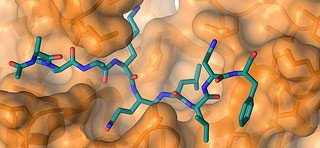Question:
How to accurately detect protease using protease Assays?
The Protein Man Says:
The study of proteolytic enzymes or proteases has always been an important component of protein research. Since these enzymes play a vital role in various biological processes such as reproduction, pre- and post-natal development and immune response, and in the development of cancer and most autoimmune, degenerative and infectious diseases, determining their specific function is considered to be of great importance in the field of proteomics. To better understand how these enzymes work, a number of protease assays are currently being used by researchers to determine their specific actions.
 How to Assay Proteases
How to Assay Proteases
The total protease activity in any given protein sample can be determined by subjecting it to a protease assay kit that uses a highly quenched dye-labelled protein substrate. Upon contact, the protease present in the sample will digest the substrate and release dye-labelled peptides in the process. Absorbance is then measured to determine protease activity. In general the more label released, the higher the signal will be.
Determining the Proteases Present in the Sample
The specific protease type present in the protein sample can be identified by using specific protease inhibitors. Protein inhibitor kits such as ProteSEEKERTM are often used by researchers to screen their samples and identify the specific proteases present. This allows them to mix a suitable inhibitor cocktail using the minimal amount of protease inhibitors required to test their samples.
Generating a Standard Curve
The resulting absorbance values are then compared to a standard curve. In a nutshell, a standard curve is generated by allowing various known quantities of tyrosine to react with the reagent. To accurately measure the amount of tyrosine liberated in the process, you should create the standard curve by recording the absorbance values for the standards, the test samples and the blanks (for both standard and test samples) and calculate the difference between the absorbance of the test sample and the test blank. You can compute for the activity of enzyme in units per/ml by using the following equation:
Units/ml enzyme = (umole tyrosine equivalents released) x 11/(1) x (10) x (2)
Whereas:
11= Total volume (in milliliters) of assay
10= Time of assay (in minutes) as per the Unit definition
1= Volume of Enzyme (in milliliters) of enzyme used
2= Volume (in milliliters) used in Colorimetric Determination
Image By: sc63






